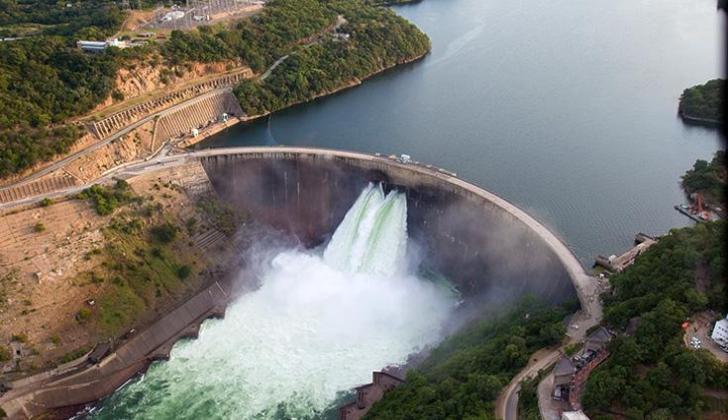News / National
Kariba Dam water levels records steady rise
05 May 2025 at 14:54hrs |
19 Views

Water levels in Lake Kariba have recorded a steady rise, offering renewed optimism for improved electricity generation in Zimbabwe and Zambia, according to the latest update from the Zambezi River Authority (ZRA).
In a press release issued this week, ZRA reported that the lake's level had climbed to 477.68 metres, up from 477.42 metres during the same period last year. This growth reflects stronger inflows from the upper Zambezi catchment, a critical source of water for the dam.
The increase in lake level has correspondingly raised usable live storage volume to 9.81 billion cubic metres, compared to 8.62 billion cubic metres recorded last year - a development that could help ease persistent electricity shortages in the region.
"The steady increase in inflow has significantly improved the lake's usable storage, which is vital for sustaining hydropower generation," the Authority said.
The percentage of usable water suitable for electricity production - referred to as live storage for power generation - currently stands at 15.15%, up from 13.31% over the same period in 2024.
Lake Kariba, one of the world's largest man-made reservoirs, was built to function within operating levels of 475.50 metres to 488.50 metres, with a 0.70-metre freeboard to avoid overflow. At full supply level, it holds a massive 181 billion cubic metres of water, though only 65 billion cubic metres are considered usable for hydropower, with the rest being dead storage.
The rise in water levels offers a lifeline to the region, which has in recent years endured frequent power cuts due to low dam levels and subsequent generation constraints at the Kariba South (Zimbabwe) and Kariba North (Zambia) power stations.
The update brings cautious optimism to both governments and industry players as they look to stabilise energy supplies ahead of peak demand periods.
In a press release issued this week, ZRA reported that the lake's level had climbed to 477.68 metres, up from 477.42 metres during the same period last year. This growth reflects stronger inflows from the upper Zambezi catchment, a critical source of water for the dam.
The increase in lake level has correspondingly raised usable live storage volume to 9.81 billion cubic metres, compared to 8.62 billion cubic metres recorded last year - a development that could help ease persistent electricity shortages in the region.
"The steady increase in inflow has significantly improved the lake's usable storage, which is vital for sustaining hydropower generation," the Authority said.
Lake Kariba, one of the world's largest man-made reservoirs, was built to function within operating levels of 475.50 metres to 488.50 metres, with a 0.70-metre freeboard to avoid overflow. At full supply level, it holds a massive 181 billion cubic metres of water, though only 65 billion cubic metres are considered usable for hydropower, with the rest being dead storage.
The rise in water levels offers a lifeline to the region, which has in recent years endured frequent power cuts due to low dam levels and subsequent generation constraints at the Kariba South (Zimbabwe) and Kariba North (Zambia) power stations.
The update brings cautious optimism to both governments and industry players as they look to stabilise energy supplies ahead of peak demand periods.
Source - the herald
Join the discussion
Loading comments…





























.jpg)

